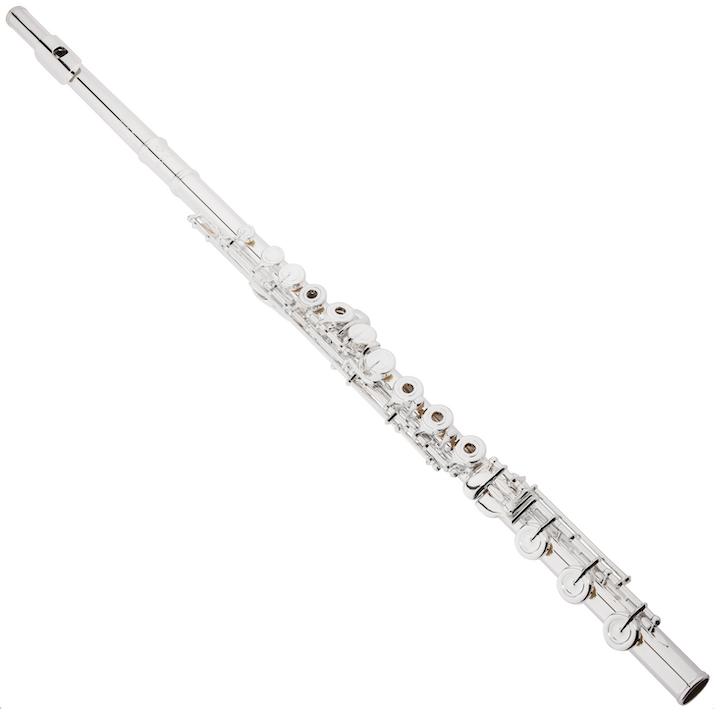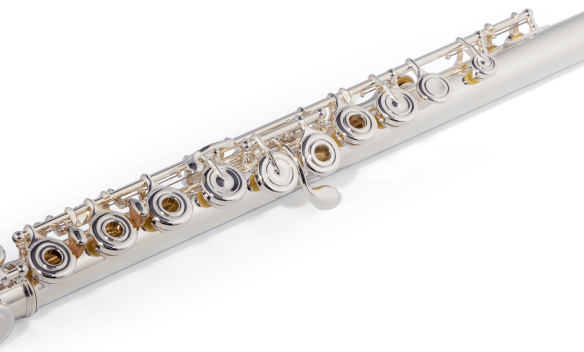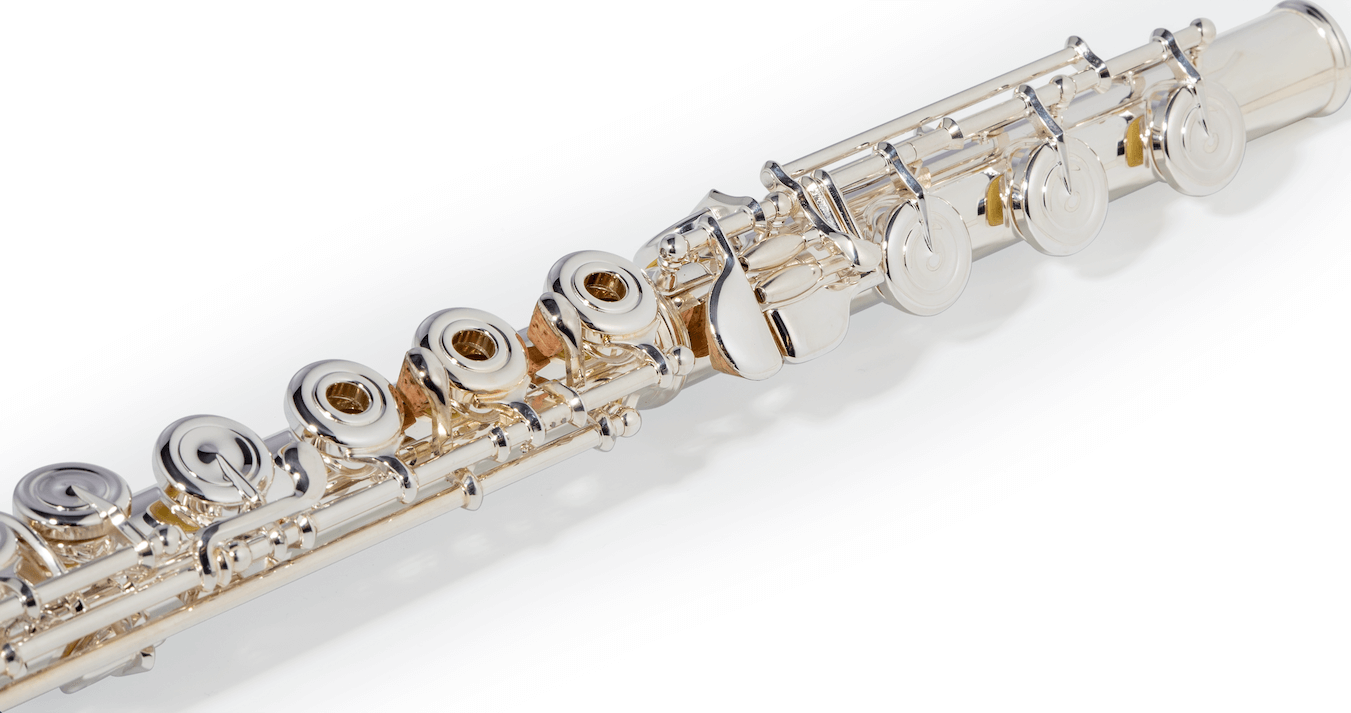Split E Mechanism

The Split E mechanism is designed to make the high E more responsive. This mechanism physically splits the double G keys. When playing G, the keys behave as normal, closing both of the G keys.
When fingering high E, the mechanism closes the lower of the two G keys. This creates ideal venting for this note and therefore makes this usually troublesome note very stable. The high E speaks easier, and slurs from high A to E are much easier. The split E mechanism is only available with offset G keys. It is available as an option on Azumi flutes.
Other Features
Inline or Offset G Keys

The G keys of a flute can be made inline or offset. There is no difference in the tone produced with inline or offset G keys, it is simply a matter of comfort and preference. Inline G keys are in a straight line with the rest of the keys on the flute and are all mounted on the same rod.
Offset G keys are offset slightly from the rest of the keys and are mounted on separate posts. A growing number of flutists prefer the comfort and hand position on the offset G flute. Azumi flutes are available with your choice of offset or inline G keys.
Other Features
C# Trill Key

The C# trill key is a lever activated by the first finger of the right hand to open a tone hole next to the thumb key. It simplifies many awkward trill and tremolo fingerings and has become a preferred feature among professional flutists. It is available as an option on the Azumi AZ3 flute.
C# Trill Key Fingerings:
• B to C#: Finger B and trill the C# key. This works in both the first and second octaves.
• C to C#: Finger C and trill the C# key. Again, this works in both first and second octaves.
• High F# to G#: Finger high F# and trill the C# key.
• High G to Ab: Finger high G and trill the C#key.
• High G to A: Finger high G and trill the C# trill key and the upper trill key together.
• High Ab to Bb: Finger high Ab and trill the C# trill key and both trill keys together.
Other Features
B Footjoint

The flute’s footjoint can be built to low C or B. The B foot reaches down to a low B, one half-step lower than the C footjoint. It has one more key and the length of the tube is extended by about one inch.
The B footjoint also adds weight to the overall instrument which increases resistance and results in producing an overall darker tone versus the brighter tone of a C footjoint. The B footjoint improves the overall pitch of the third octave. The B footjoint is the standard choice on flutes above the student level. All Azumi flutes come with a B footjoint.
Other Features
Open Holes

An open hole flute has holes at the center of the A, G, F, E, and D keys. Open holes are the standard among intermediate flutes and are the preference of the majority of flutists.
Playing open holes requires and therefore develops fingering accuracy that is not essential on plateau keys. Open holes can be used for effects such as bending and shading, and the player can crack some holes to bring the pitch back up when playing softly on high register notes. Some clever trills make use of the open hole venting for better pitch. All Azumi flutes have open holes.
Open holes can be closed with specially made plugs that can be inserted or removed by the player. Plugs are normally used during the adjustment period from a closed hole flute to an open hole flute. The plugs can be removed methodically, one at a time, until the technique and feel are developed. Most flutists take out the A first, then the F, and then the E. Lastly, remove the 3rd fingers, either the G or D first depending on the individual.
Other Features
Altus Scale

Based on the work and recommendations of renowned British flutist William Bennett, the Altus Scale offers excellent intonation, carefully tuned harmonics, and balanced registers.
Altus flutemaker Shuichi Tanaka along with Bennett admired Albert Cooper’s scale work and made some modifications of their own, creating the Altus/Bennett scale. The Altus/Bennett scale is used on all Altus and Azumi flutes. The precise intonation not only makes these flutes effortless to play in tune, it also enhances the resonance of the instrument. A more resonant flute has more depth and color to the sound and is more flexible.
It may help to explain exactly what is meant by the “scale” of an instrument. The instrument’s scale is the relationship of the tone holes to each other, the size of each hole, and the distance of the tone holes from the embouchure. The musician will play with better intonation while expending less effort with a well-built scale.
Other Features
Pointed Key Arms

Usually reserved for professional models, all Azumi Flutes feature pointed key arms for an elegant and refined look, improved key strength, and even pad wear.
The pointed arms connect the key hinge tube to the key cup at the back and across the top of the key, ending in a point in the center of the cup.







